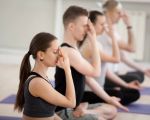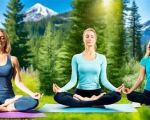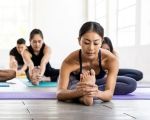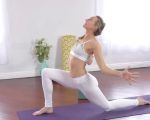- build-a-strong-foundation-through-alignment
- develop-consistency-and-patience-in-practice
- use-modifications-and-props-effectively
- mental-focus-and-breath-awareness
- learning-from-personal-stories-and-community
1. Build a Strong Foundation Through Alignment
When approaching advanced postures, one of the most essential tips for mastering challenging yoga poses is understanding alignment. Without a proper foundation, even the most flexible yogi can injure themselves or plateau in progress. Whether you’re attempting crow pose, forearm stand, or king pigeon, precise skeletal stacking and joint engagement matter more than brute strength or flexibility.
Take, for example, the transition into handstand. Many practitioners rush into kicking up without stabilizing their shoulders, core, or wrists. But mastering shoulder stacking, fingertip pressure, and hip placement is often what separates balance from a crash landing.
If you're uncertain about your posture, filming your pose or asking a certified teacher for feedback can make a massive difference. You’ll often find that the smallest corrections—like tucking your tailbone or drawing your ribs in—dramatically improve stability.
2. Develop Consistency and Patience in Practice
There’s no shortcut to progress in yoga—especially when it comes to difficult asanas. Daily or near-daily repetition with intention is what builds the body-mind relationship required for advanced poses. This doesn’t mean pushing into discomfort daily but instead showing up with consistency and curiosity.
Jasmine, a yoga student in Philadelphia, shared her five-month journey into full wheel pose: “At first, I couldn’t even lift off the mat. But I committed to three times a week of heart openers and focused on opening my thoracic spine. One day, I just popped up like my body had been waiting for it.”
It’s stories like these that remind us that mastery is less about the goal and more about the discipline. Celebrate micro-milestones: deeper hip opening, longer holds, fewer wobbles. These are the markers that your practice is growing.
3. Use Modifications and Props Effectively
Far too often, yogis see props as a crutch. In reality, they’re essential tools that make advanced poses accessible, safe, and sustainable. Blocks, straps, bolsters—even walls—can help bridge the gap between where you are and where you want to be.
Let’s say you’re working toward compass pose but lack the hamstring openness. Using a strap around your lifted foot and supporting your hip with a block allows you to explore the shape without compromising form. Over time, the prop fades—but the alignment memory remains.
Even elite teachers rely on props. Many advise using a wall for handstand prep or a block under the sacrum in wheel pose for spinal decompression. Embracing props is not regression; it’s intelligent progression.
On Free Yoga Links, you can find curated tools and tutorials that showcase how props enhance—not hinder—your evolution in more advanced postures.
4. Mental Focus and Breath Awareness
Physical skill is only half the battle. Challenging poses often bring up fear, frustration, or mental chatter—especially if you've fallen before. One of the most underrated tips for mastering challenging yoga poses is training your focus and breath as seriously as your muscles.
Before attempting any pose that intimidates you—like scorpion or flying pigeon—pause to ground your breath. Visualize the posture. Feel your body already in the shape, breathing fully. This mental preparation lowers cortisol levels and boosts muscle coordination.
In the words of a longtime teacher, “The body hears everything the mind says.” If you approach a pose thinking, “I’ll never get this,” your nervous system holds back. If instead you say, “I’m exploring this,” your body is more likely to release resistance.
Over time, this shift from external performance to internal presence transforms your relationship with challenging poses entirely.
5. Learning from Personal Stories and Community
One of the most powerful motivators for mastering advanced yoga is community. Being part of a group that shares the same challenges can lift your spirit and offer invaluable advice. Online and in-person yoga groups often share success stories, tips, and support during plateaus.
Case in point: an online challenge on crow to handstand recently went viral in yoga circles. Thousands participated, posting their progress day by day. Many said the key wasn't the destination but the collective energy and mutual accountability that kept them going.
When you hit a roadblock, chances are someone else has already faced it—and overcome it. Resources like Free Yoga Links can connect you with teachers, video breakdowns, and community events to keep your growth path supported and inspired.
Remember: yoga isn’t about nailing the hardest pose—it’s about using each one to better understand your body, mind, and breath. And the journey to mastering even one advanced posture might just open the door to deeper self-awareness and joy.








